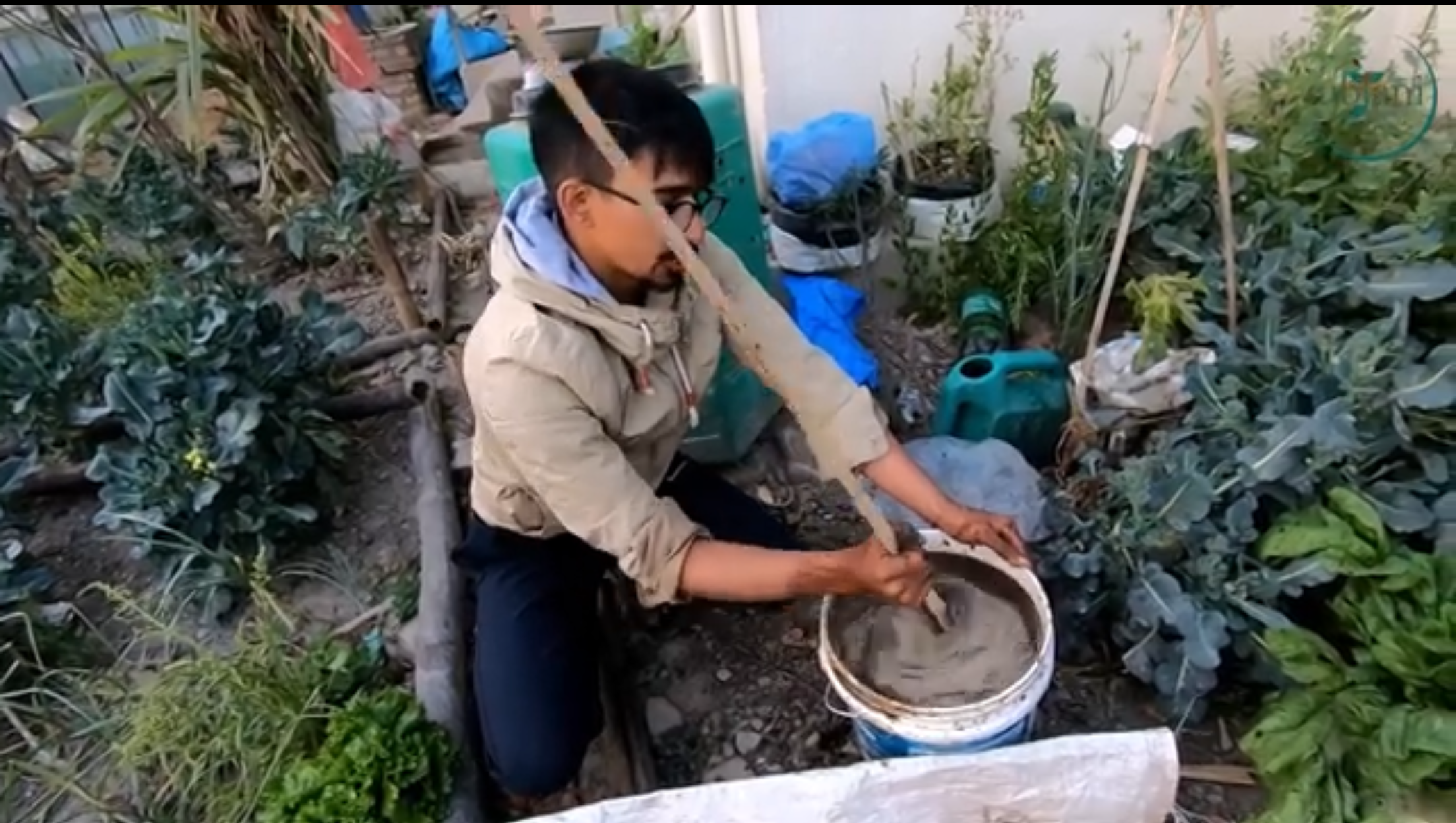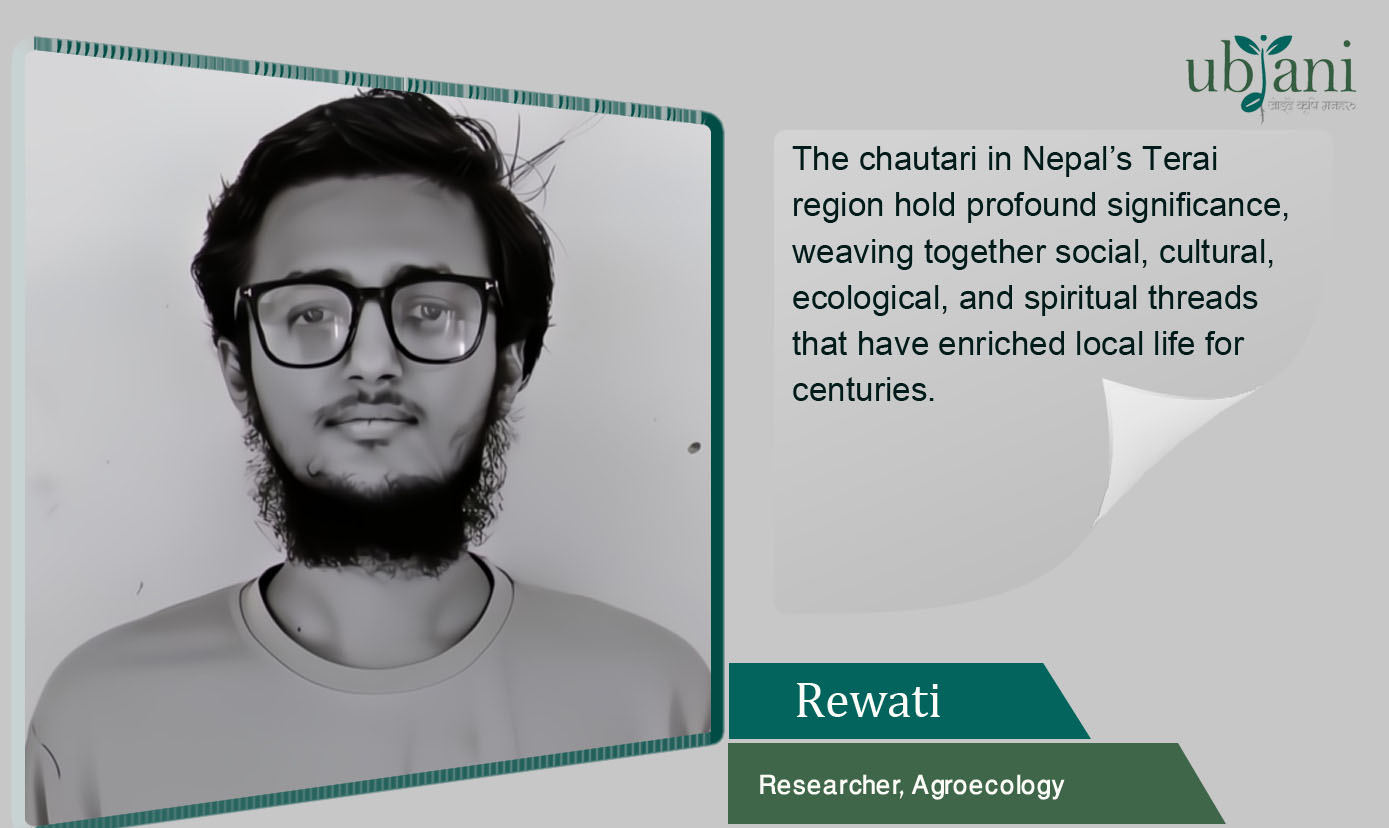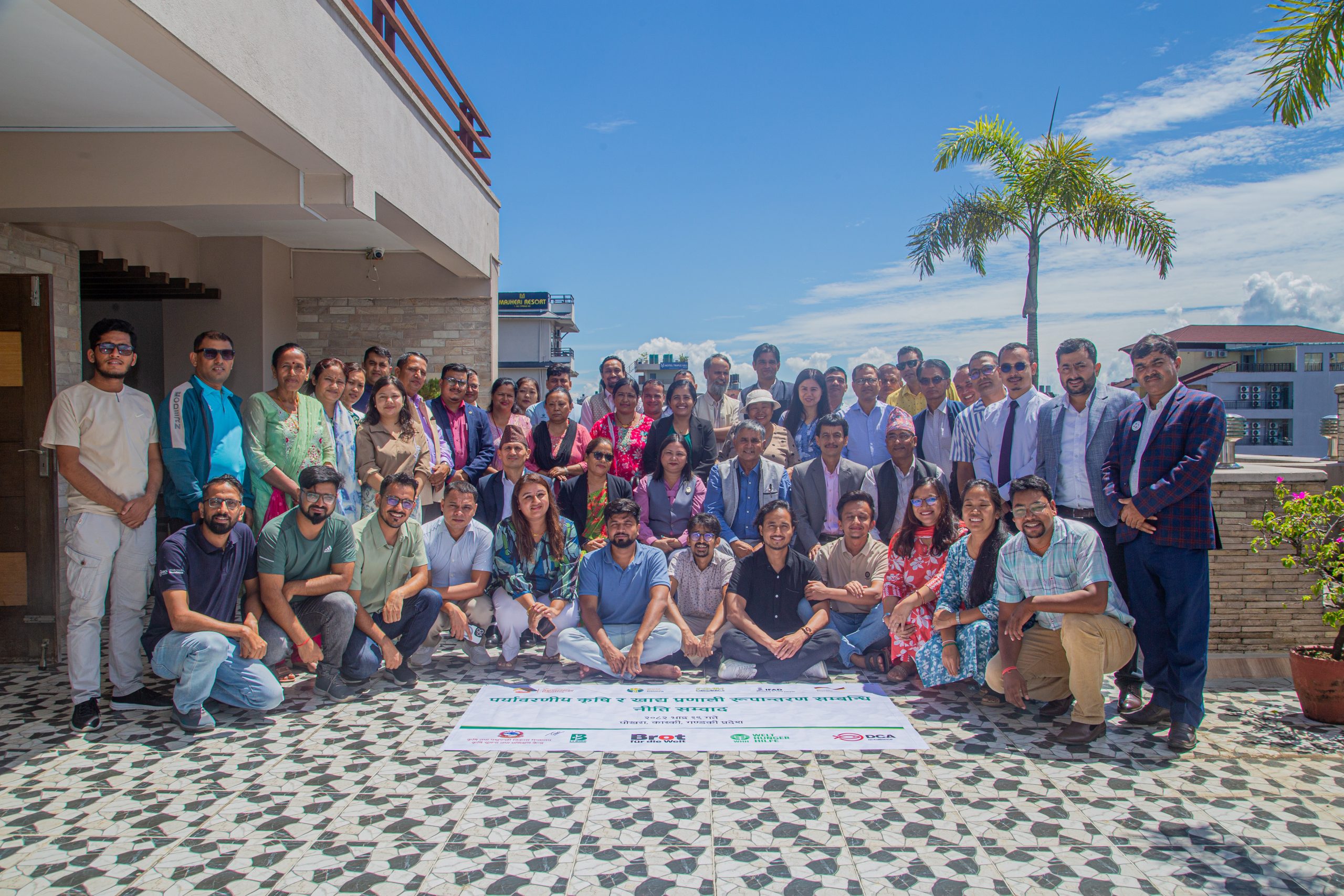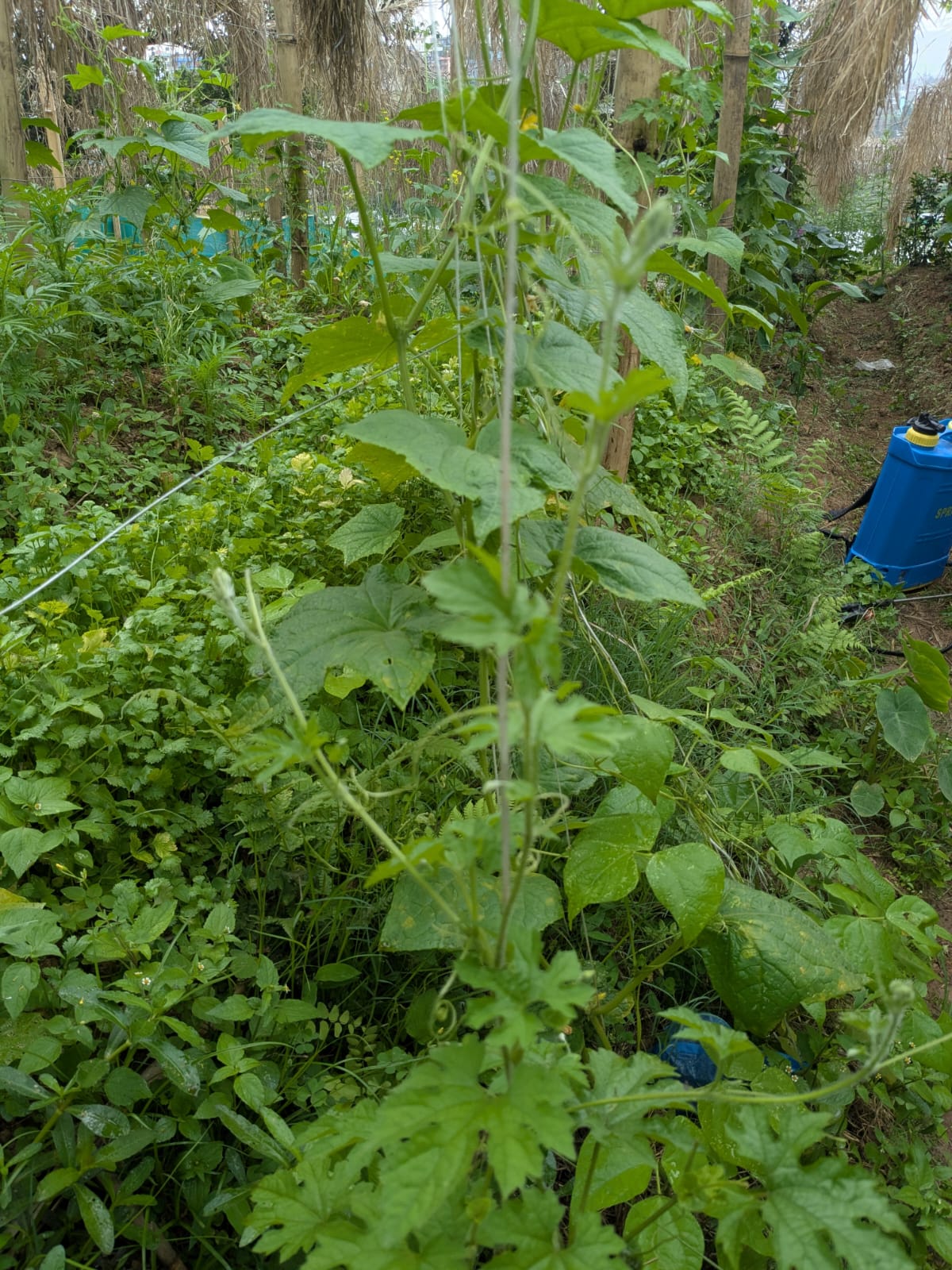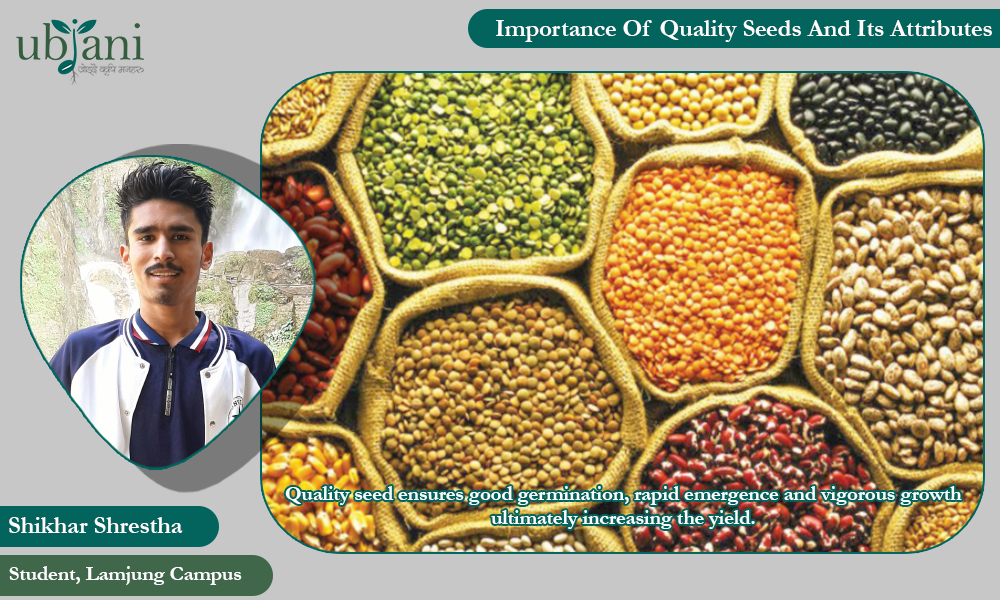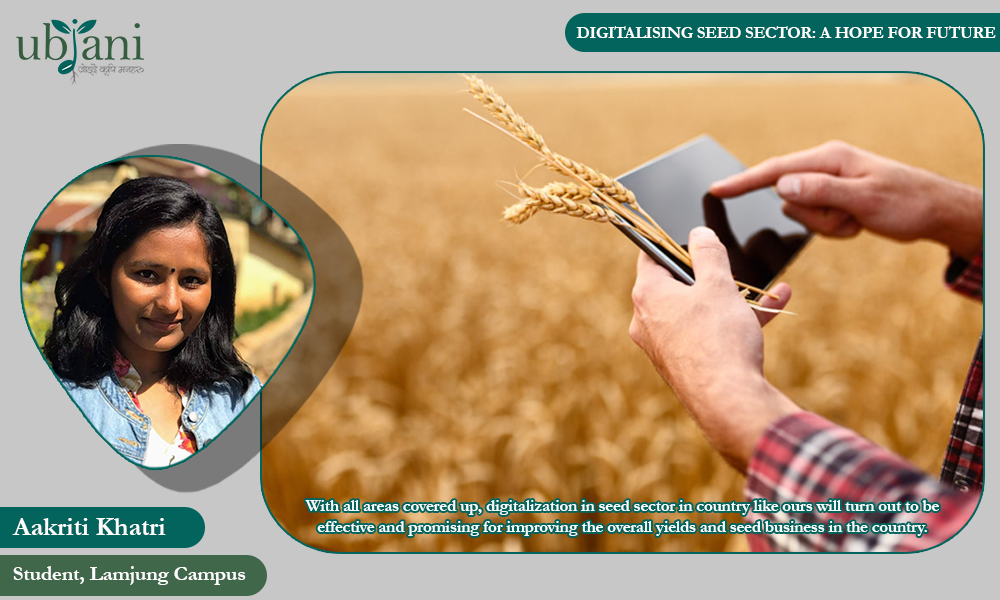
Nepal’s agriculture is mostly small-scale and subsistence-oriented, mostly comprising of integrated crop and livestock farming and providing few economies of scale in production and marketing. The agriculture sector represents about one-third of the Gross Domestic Product and 75% of the labor force is engaged in agriculture. The average landholding size is of 0.7 hectares and 55% of farms are operating on less than 0.5 hectares, the majority of farms are unable to produce enough to meet their household food requirements for the whole year. With the urban population growing at 4.7%, it will not be possible for Nepal to meet the growing domestic food demand without increased agricultural productivity and competitiveness of domestic production.
While there are a lot of rooms of improvement in agronomical, marketing and research areas, seed has been one of the most critical factors, a basic input that should not be overlooked. Every component in the value chain of seed that includes production, processing, seed market and distribution and all legal procedures needed for providing quality seed to farmers should be taken care of. One of the critical challenges farmers encounter is timely access to quality seeds, due to unavailability of improved varieties, lack of information about them, and weak planning and supply management and different other existing market problems. Over 2,500 seed entrepreneurs engaged in production, processing and marketing of seeds in Nepal rely on public research centers to get early generation seeds of various crops, especially cereals, for subsequent seed multiplication. The existing seed information system is cumbersome and the process of collecting information takes a minimum of one year before a seed company knows where to get the required amount and type of seed for multiplication. With all these challenges and problems in seed sector, effective solutions and innovations for the sector is the need of time.
Digitalization of agricultural sector that includes seed sector too may be an idea that we can look up to. While the world economy along with human life has been devastated by the Covid-19 pandemic, Nepal, too remains badly affected. However, rays of hopes arose as things began to go more digital and work from home became one of the solutions. Though things could not be as effective as analog systems, the need of digitalization was felt. But, digitalization in seed sector has not started due to pandemic but a long ago due to various problems faced by farmers, producers, suppliers and consumers to get access to quality inputs to agriculture, high productivity and a reasonable price. Different countries around the world have gone digital in this sector while in Nepal, there is urge of going digital in days to come. As of initiation, a new digital seed information system is going to be introduced in 2020 or following year. The information system is currently under development, as part of the Nepal Seed and Fertilizer project, funded by the United States Agency for International Development (USAID) and led by the International Maize and Wheat Improvement Center (CIMMYT). This initiative was the result of collaboration between U.S. Global Development Lab and USAID under the Digital Development for Feed the Future (D2FTF) initiative, which aimed to demonstrate that digital tools and approaches can accelerate progress towards food security and nutrition goals. Other digital systems may use SMS, GIS, various mobile applications,etc.
Digitally Enabled Seed Information System (DESIS) aims to provide an automated version of the seed balance sheet. Agencies will be able to place their requests and seed producers to post their seed supplies with unique logins. The platform also aims to help to aggregate and manage breeder, foundation and source seed, as well as certified and labelled seed and building a digital inspection system and QR code based seed certification system. The system will also include an offline seed catalogue where users can view seed characteristics, compare seeds and select released and registered varieties available in Nepal. Users can also generate seed quality reports on batches of seeds. It will be made accessible through mobile website or android app where users can operate in English and Nepali language both.
Going digital in seed system has most of the times proven to be beneficial. Research done in many countries, including African countries and India has found positive results. Digitalisation increases the inclusion, efficiency and innovation while reducing the transaction cost. Linking farmers directly with seed suppliers and buyers improves the seed market system and digital platforms are opened up for more people engaged in seed business who previously might have been restricted either due to lack of easy access to market or due to linkage between buyers and sellers or many other socio-economic barriers. The whole processes in seed value chain become more efficient as works become faster, cheaper and more convenient. Though initial set ups for digital systems seem to be expensive, they become worthy as transaction costs gradually lowers, improving the overall economy. The problem of middleman which is a major problem in analog systems reduces as farmers become aware of the market price and so can make an optimal decision for their products. This also enhances the knowledge of farmers, breeders about the possible risks during production and also awares about the quality seeds which will eventually decrease the use of less quality seeds and seed materials that results in lower productivity and food insecurities. Real time information on seed demand and supply by all the stakeholders can be accessed and the problem of late access to quality seeds decreases.
But as two opposite sides of coin, digital systems, too have some limitations out of which some may improve while others may not. While introducing digital system, inclusion, that we aim at may not be achieved. As digital systems need knowledge to operate, instead of including, it may exclude less skilled manpower or they may not become competitive which in turn may increase the social gaps. Similarly, most of the rural areas in the country do not have access to internet facility enough to support such new technologies which again makes the urban areas and farmers/producers there more privileged. Small scale producers may not be able to invest for advanced digital technologies which again results in disturbance in economy and price dispersion. And even after going digital, still there are lots of works that has to be done manually like decision making process which is vital.
While we get to know about some possible problems that we may face, there are rooms for improvement and prevention. Inclusive packages should be brought by Government of Nepal that may include policy reforms, skill development trainings, workshops to teach technologies and extension programmes including knowledge about new system. Internet facilities should be made available in rural areas too and while we develop easy internet, SMS facilities may be alternative to include farmers from rural areas. To make the system more effective, reforms on policies and legislations according to need of time is equally important.
To sum up, there is a need of digitalizing the seed sector, taking in account the limitations that it may come with. As the productivity of crops is largely varied by use of quality seeds at right time, it is important that farmers get access to it and it is more important for farmers to be secured in the field which can be ensured more by going digital. With all areas covered up, digitalization in seed sector in country like ours will turn out be effective and promising for improving the overall yields and seed business in the country.
REFERENCES





